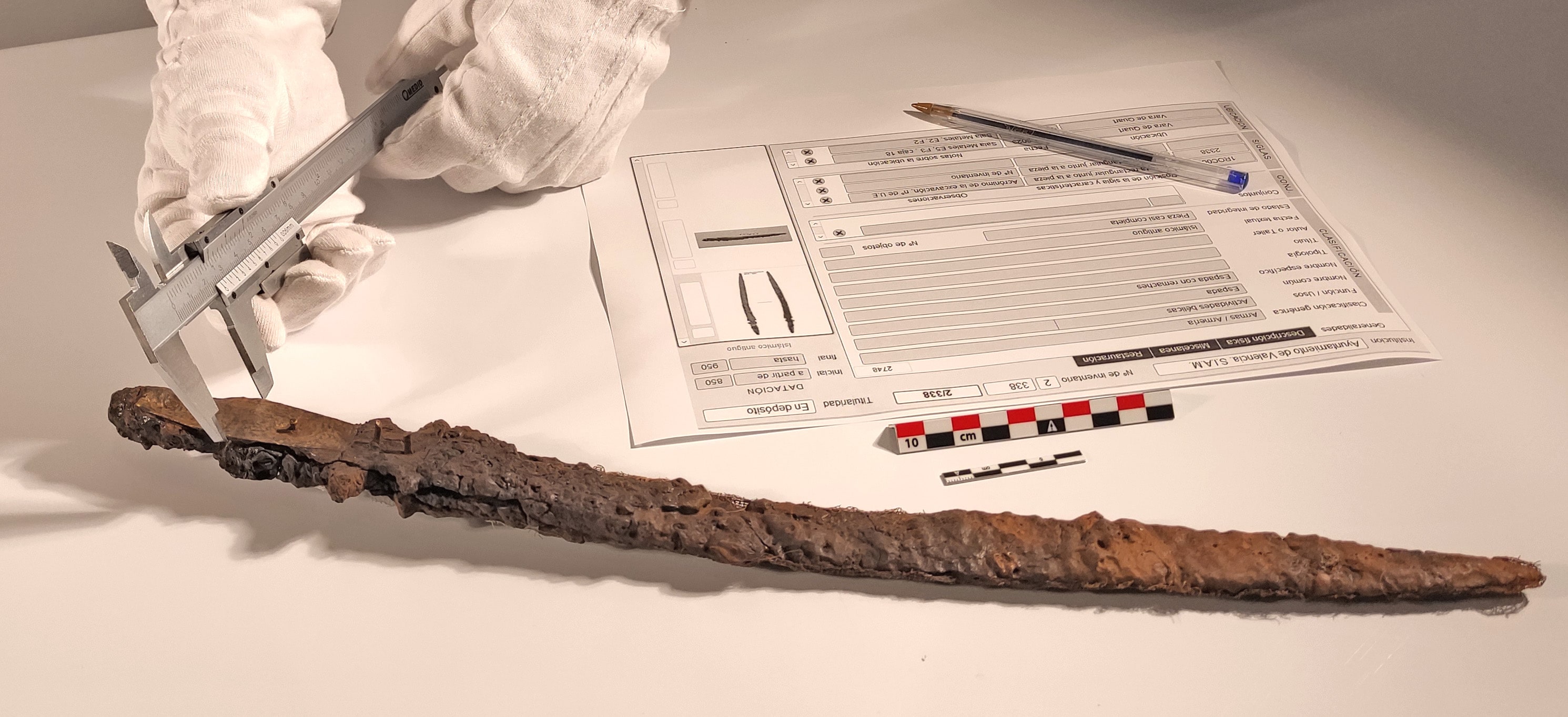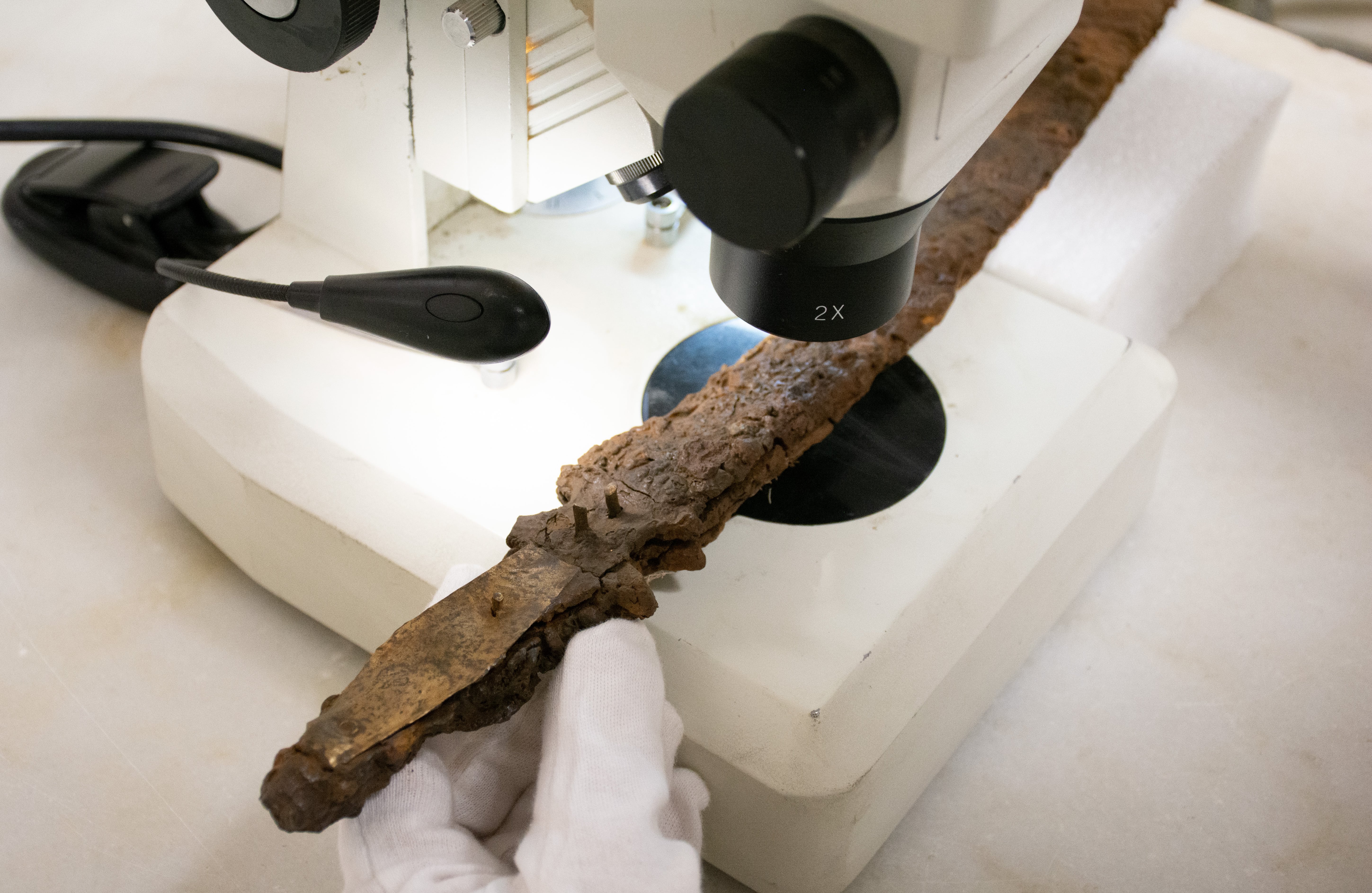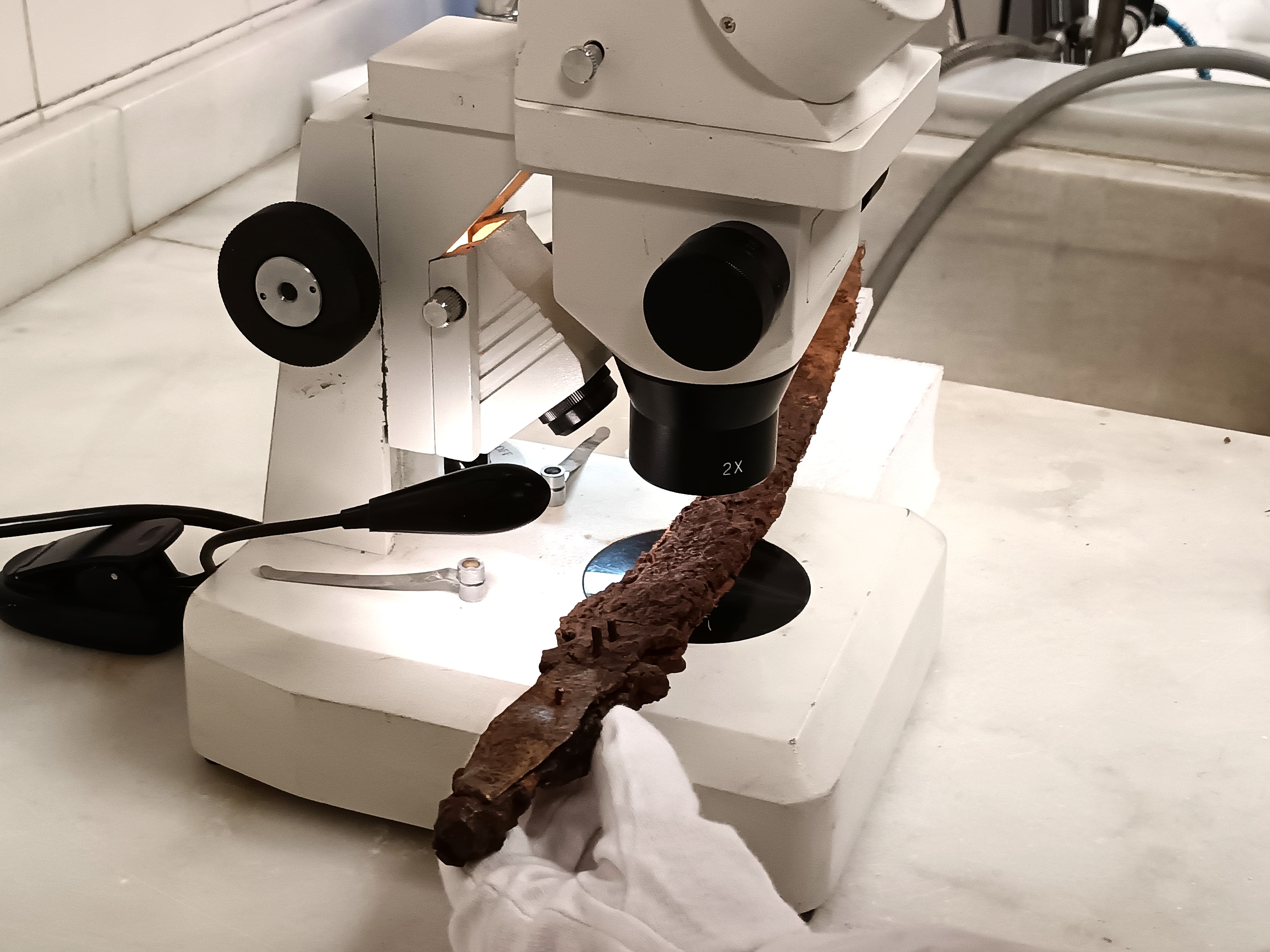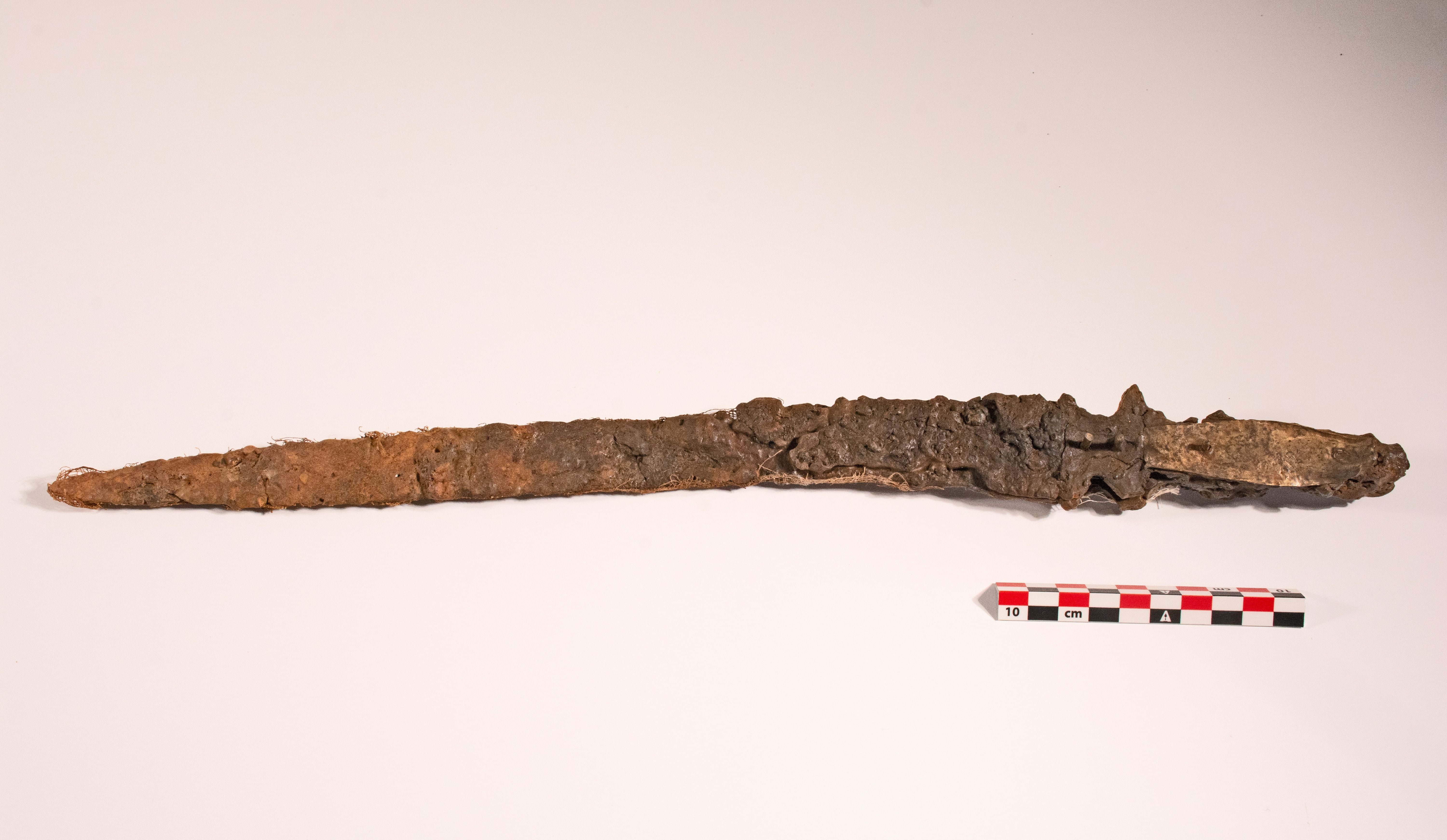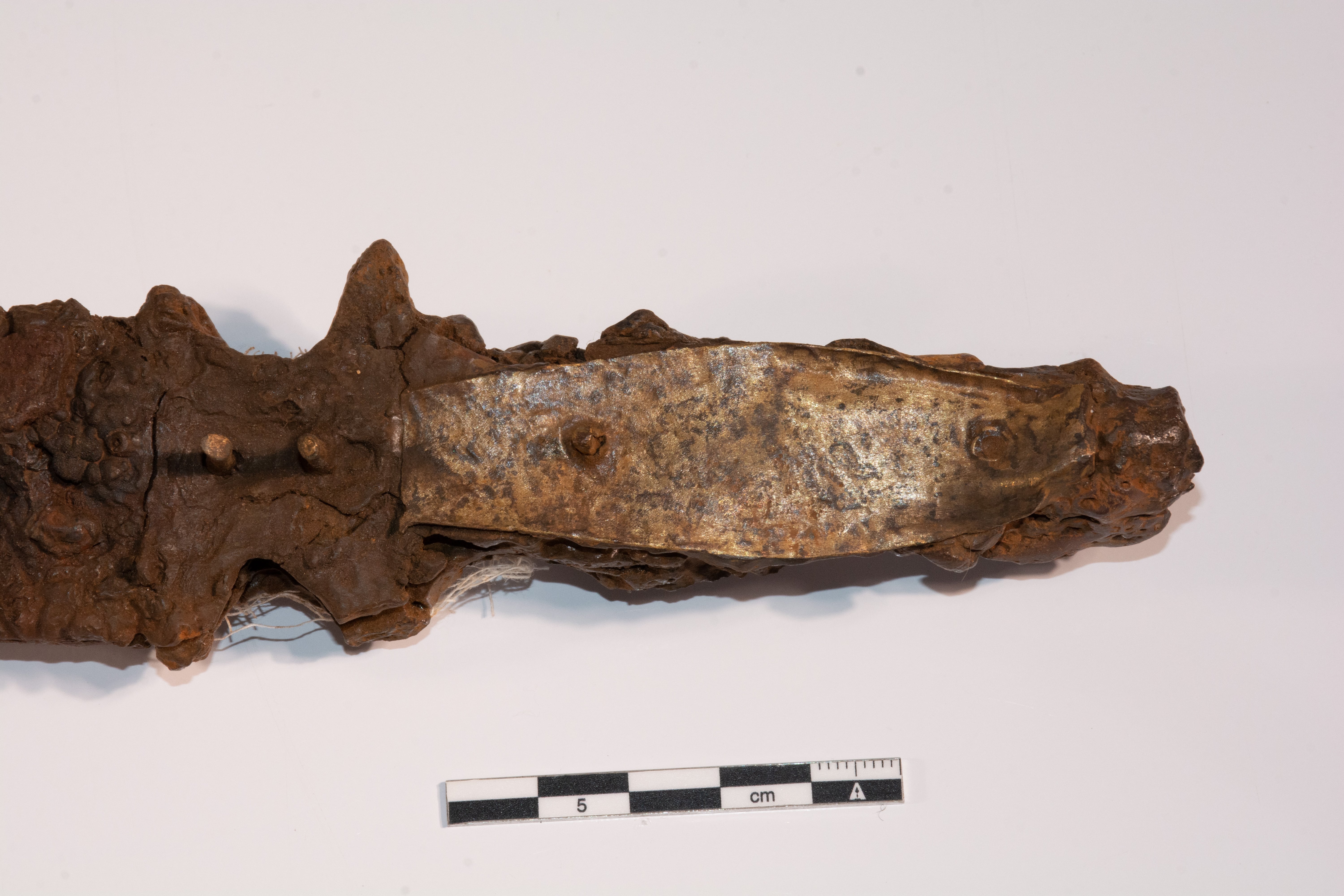Found in Valencia the Spanish Excalibur, dated back to the 10th century
| 13.05.2024 | 18:36
The mystery surrounding the sword discovered in 1994 in an old house in Ciutat Vella has just been unveiled. Its true origin has not been known until now, 30 years after it was found embedded in the ground of the moat.
Upon extraction, its 46 centimeters of iron, adorned with bronze plates and notches to facilitate the use by its bearer and the curvature of its tip, typical of the Visigothic era, suggested that the Valencian Excalibur belonged to the barbarian people.
However, restoration work carried out in recent months by the Archaeology Service of the València City Council has revealed that the origin of the famous sword is Islamic.
It dates back to the 10th century, from the caliphal epic of the city, then known as Balansiya. This has been proven through the analysis of sedimentary layers. With the multicultural history of the city of Valencia and the difficult soil conditions regarding the preservation of past remains, this represents a significant discovery for the archaeological history not only of the city but of the entire country. After all, it is the only sword of similar characteristics, only comparable to the one found in the excavations of Medina Azahara belonging to the caliphal city of Abderramán III.
It is expected that, after the summer, the sword can be visited along with other archaeological evidence at the City Council's Town Hall.
One of the few evidences of the city's Muslim period
The sword adds to the scarce legacy found from the more than 40 years of the Taifa of Balansiya. In a city with hardly any archaeological evidence regarding the monotheistic religions of its later occupants, the remains of the old town's Arab wall and the Portal de la Valldigna are the only architectural evidence of a medieval era that, one way or another, would extend until the conquest of Jaume I in 1238.
A cultural era that is reflected in other aspects that definitely have a great influence on the current life and customs of Valencia. The cultivation of rice and citrus fruits, the use of irrigation ditches—and, later, the creation of the Water Tribunal, a UNESCO World Heritage Site—or the passion for gunpowder are a direct legacy of ancient Balansiya, for example, as explained by the legacy of Arab Valencia.

